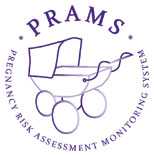CDC Preterm Birth Activities
 CDC collaborates with national, state, tribal, and territorial organizations and partners to increase awareness of preterm births and its consequences and translate science into clinical and public health practice. Ongoing collaborations involve the American College of Obstetricians and Gynecologists, the American Academy of Pediatrics, the March of Dimes, the Collaboration on Innovation and Improvement Network, the Association of State and Territorial Health Officials’ Healthy Babies Initiative, and state-based perinatal quality collaboratives.
CDC collaborates with national, state, tribal, and territorial organizations and partners to increase awareness of preterm births and its consequences and translate science into clinical and public health practice. Ongoing collaborations involve the American College of Obstetricians and Gynecologists, the American Academy of Pediatrics, the March of Dimes, the Collaboration on Innovation and Improvement Network, the Association of State and Territorial Health Officials’ Healthy Babies Initiative, and state-based perinatal quality collaboratives.
CDC’s Division of Reproductive Health is engaged in the following activities:
- Perinatal Quality Collaboratives
- Maternal and Child Health Epidemiology Program
- Vitamin D Studies
- Smoking in Pregnancy
- Surveillance, Data Quality, and Data Linkages
CDC scientists, in collaboration with our partners, are working to understand the multiple reasons for preterm births and advance new strategies for prevention. CDC provides support to state Perinatal Quality Collaboratives (PQC) initiatives in California, New York, Illinois, Massachusetts, North Carolina, and Ohio. State PQCs are networks of perinatal care providers and public health professionals working together to implement best practices to improve pregnancy outcomes for women and newborns.
One of the goals of CDC’s work with PQCs is the dissemination of strategies used by established PQCs to states with PQCs in development. CDC worked with experts to create a resource guide to help support the work of state PQCs, Developing and Sustaining Perinatal Quality Collaboratives: A Resource Guide for States [PDF - 566KB]. In addition, in partnership with CDC-funded collaboratives, the Division of Reproductive Health hosts Webinars that allow PQCs to share strategies related to their development as well as specific perinatal quality improvement initiatives. Recordings of previous Webinars are archived and available for viewing. CDC and the March of Dimes are also working together to launch the National Network of Perinatal Quality Collaboratives that aims to support PQCs and provide opportunities for the sharing of best practices between PQCs across the country.
 The Maternal and Child Health Epidemiology Program (MCHEP) builds state, local, and tribal capacity to effectively use maternal and child health epidemiologic research and scientific information to improve public health program and policy related to women, children, and families’ health. CDC works directly with states and localities by assigning an epidemiologist as a consultant for the state’s Maternal and Child Health (MCH) programs. In 2016, MCHEP had 14 MCH Epidemiology assignees, 4 MCH Council of State and Territorial Epidemiology fellows, and 2 Epidemic Intelligence Officers located in state health departments. Assignees provide direct assistance to public health agencies on a variety of topics, including preterm birth.
The Maternal and Child Health Epidemiology Program (MCHEP) builds state, local, and tribal capacity to effectively use maternal and child health epidemiologic research and scientific information to improve public health program and policy related to women, children, and families’ health. CDC works directly with states and localities by assigning an epidemiologist as a consultant for the state’s Maternal and Child Health (MCH) programs. In 2016, MCHEP had 14 MCH Epidemiology assignees, 4 MCH Council of State and Territorial Epidemiology fellows, and 2 Epidemic Intelligence Officers located in state health departments. Assignees provide direct assistance to public health agencies on a variety of topics, including preterm birth.
 Women who have low levels of vitamin D may be at higher risk for problems during pregnancy, including preterm birth, but more research is needed to clarify the relationship between pregnancy problems and vitamin D. CDC funded researchers at the University of Pittsburgh to examine the association between maternal vitamin D levels and risk of preterm birth. Findings show preterm birth rates decreased as vitamin D levels increased.
Women who have low levels of vitamin D may be at higher risk for problems during pregnancy, including preterm birth, but more research is needed to clarify the relationship between pregnancy problems and vitamin D. CDC funded researchers at the University of Pittsburgh to examine the association between maternal vitamin D levels and risk of preterm birth. Findings show preterm birth rates decreased as vitamin D levels increased.
CDC also conducted a study in Michigan, North Carolina, and Washington State to examine vitamin D levels in stored blood samples of pregnant women. Findings suggest that low vitamin D levels may affect infant birthweight for age. An additional analysis confirmed seasonal changes in vitamin D, with peak levels in summer and the lowest levels in winter. However, there are smaller seasonal changes among black mothers.
Smoking in Pregnancy
 Despite decreases in smoking prevalence over recent years, in 2013, about 1 in 5 women smoked in the 3 months before pregnancy, and about 1 in 10 smoked during the last 3 months of pregnancy, according to Pregnancy Risk Assessment Monitoring System (PRAMS) data from 27 states. In addition to a variety of negative pregnancy outcomes, smoking during pregnancy is associated with 5%-8% of the cases of preterm birth. CDC is actively working to improve reproductive health outcomes through the prevention of smoking among women before, during, and after pregnancy in the United States and globally. Learn more about CDC’s work on tobacco use in pregnancy.
Despite decreases in smoking prevalence over recent years, in 2013, about 1 in 5 women smoked in the 3 months before pregnancy, and about 1 in 10 smoked during the last 3 months of pregnancy, according to Pregnancy Risk Assessment Monitoring System (PRAMS) data from 27 states. In addition to a variety of negative pregnancy outcomes, smoking during pregnancy is associated with 5%-8% of the cases of preterm birth. CDC is actively working to improve reproductive health outcomes through the prevention of smoking among women before, during, and after pregnancy in the United States and globally. Learn more about CDC’s work on tobacco use in pregnancy.
 Much of CDC’s maternal and infant health surveillance, data quality improvement, and data linkage efforts revolve around birth certificates, the primary resource for learning about preterm birth rates in the United States. CDC partners the National Association for Public Health Statistics and Information Systems (NAPHSIS) to promote the accurate recording of gestational age on birth certificates that is critical to calculate the rate of preterm birth, better understand the impact of preterm birth, follow trends, and make recommendations about preventing preterm birth.
Much of CDC’s maternal and infant health surveillance, data quality improvement, and data linkage efforts revolve around birth certificates, the primary resource for learning about preterm birth rates in the United States. CDC partners the National Association for Public Health Statistics and Information Systems (NAPHSIS) to promote the accurate recording of gestational age on birth certificates that is critical to calculate the rate of preterm birth, better understand the impact of preterm birth, follow trends, and make recommendations about preventing preterm birth.
Additional Sources of CDC Preterm Birth Data
Assisted Reproductive Technology (ART) Surveillance
 The CDC National ART Surveillance System (NASS) is a nationwide system for monitoring ART use and outcomes. Analysis of NASS data has supported the evidence suggesting a higher risk for certain adverse outcomes, including preterm birth, among women who use ART.
The CDC National ART Surveillance System (NASS) is a nationwide system for monitoring ART use and outcomes. Analysis of NASS data has supported the evidence suggesting a higher risk for certain adverse outcomes, including preterm birth, among women who use ART.
Pregnancy Risk Assessment Monitoring System
 The Pregnancy Risk Assessment Monitoring System (PRAMS) is a surveillance project of the CDC and state health departments. PRAMS collects state-specific, population-based data on maternal attitudes and experiences before, during, and shortly after pregnancy. PRAMS data have been used to analyze the characteristics of women who experienced preterm delivery.
The Pregnancy Risk Assessment Monitoring System (PRAMS) is a surveillance project of the CDC and state health departments. PRAMS collects state-specific, population-based data on maternal attitudes and experiences before, during, and shortly after pregnancy. PRAMS data have been used to analyze the characteristics of women who experienced preterm delivery.
National Center for Health Statistics (NCHS)
CDC’s NCHS is the principal health statistics agency of the United States. Through its relationship with vital registration systems throughout the United States, NCHS collects, analyzes, and publishes data on a wide range of health indicators, including preterm birth. For more information, visit the NCHS birth data page.
- Page last reviewed: November 10, 2016
- Page last updated: November 14, 2016
- Content source:


 ShareCompartir
ShareCompartir